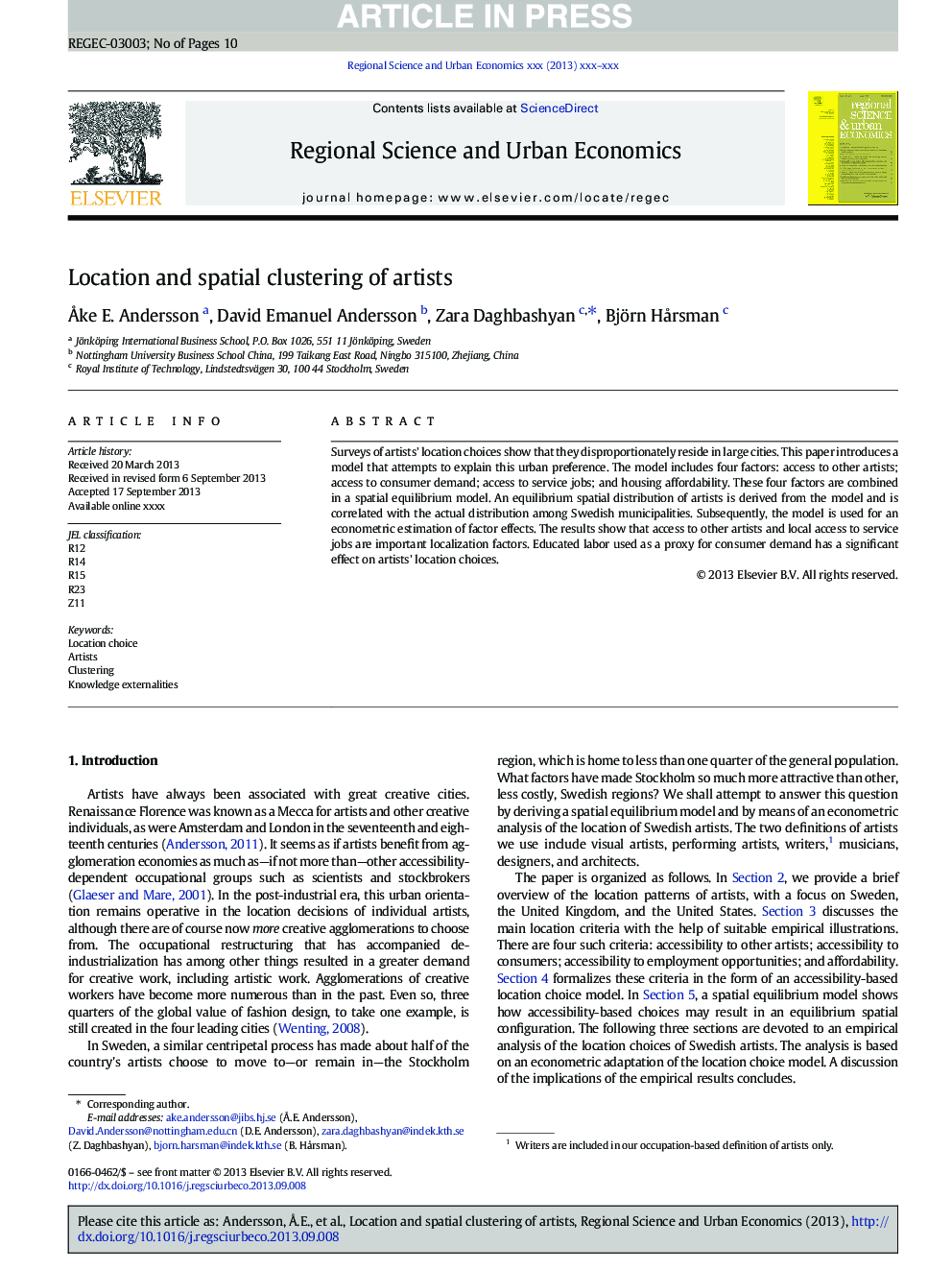| Article ID | Journal | Published Year | Pages | File Type |
|---|---|---|---|---|
| 7384000 | Regional Science and Urban Economics | 2014 | 10 Pages |
Abstract
Surveys of artists' location choices show that they disproportionately reside in large cities. This paper introduces a model that attempts to explain this urban preference. The model includes four factors: access to other artists; access to consumer demand; access to service jobs; and housing affordability. These four factors are combined in a spatial equilibrium model. An equilibrium spatial distribution of artists is derived from the model and is correlated with the actual distribution among Swedish municipalities. Subsequently, the model is used for an econometric estimation of factor effects. The results show that access to other artists and local access to service jobs are important localization factors. Educated labor used as a proxy for consumer demand has a significant effect on artists' location choices.
Related Topics
Social Sciences and Humanities
Economics, Econometrics and Finance
Economics and Econometrics
Authors
Ã
ke E. Andersson, David Emanuel Andersson, Zara Daghbashyan, Björn HÃ¥rsman,
